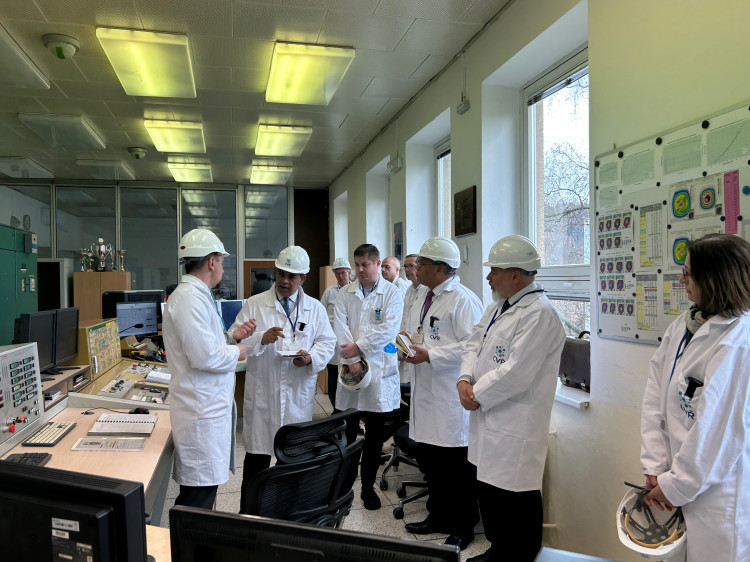An International Atomic Energy Agency (IAEA) team of experts said the Czech Republic had enhanced safety programmes and procedures at the country’s first, and largest, research reactor, through implementation of the recommendations of a previous IAEA mission conducted in 2020. The team also found the need to continue to improve training and radiation monitoring practices.
The four-day Integrated Safety Assessment of Research Reactor (INSARR) follow-up mission was requested by the Government of the Czech Republic to assess implementation of safety measures at the 10 megawatt LVR-15 water cooled research reactor, which is located 10 km north of the capital Prague.
Commissioned in 1957 and operated by the Research Centre Řež (CVŘ), the reactor is used for medical radioisotope production, research and development, and for irradiating material for industrial applications. It has undergone extensive refurbishments since 1989. The Czech Republic currently has three research reactors in operation.
The three-member team comprised one expert from Argentina and two IAEA staff who visited the reactor and met with CVŘ officials as well as LVR-15 operating personnel and management. The mission reviewed the organization and management of the LVR-15, as well as technical aspects such as safety analysis, operation and maintenance programmes, radiation protection, and safety of experimental research activities. The national licensing authority, the State Office for Nuclear Safety (SÚJB), acted as observer for the mission.
“By implementing INSARR recommendations made in 2020, CVŘ has shown commitment to continued safety improvement in accordance with the IAEA safety standards,” said Amgad Shokr, mission team leader and Head of the IAEA’s Research Reactor Safety Section. “In addition to the identification and implementation of safety upgrades, the periodic safety review of the reactor, which is planned to be completed by the end of 2026, is an opportunity for CVŘ to further strengthen its capacity in safety management.”
Noted improvements based on IAEA recommendations, made by CVŘ since the 2020 mission, included:
- Strengthening of the reactor’s organizational structure by reducing the overlap of and potential conflict between roles, responsibilities and authorities.
- Establishing a reactor safety committee to cover the review of all activities important to safety, including reactor modifications and operational safety programmes.
- Establishing procedures for the safety assessment of new experiments and modifications, and defining the relevant safety requirements for their design, testing and approval.
- Improving the ageing management programme to include experimental and radioisotope production devices and the reactor’s civil structure.
The mission team identified further actions to be taken by CVŘ to fully implement the 2020 mission recommendations, specifically to:
- Enhance procedures for learning from operating experience and self-assessment.
- Establish a formal training programme for maintenance personnel in accordance with the IAEA safety standards.
- Strengthen radiation monitoring practices in the workplace.
The team also made an additional recommendation to align operational limits and conditions with IAEA safety standards, particularly the limit on fuel burnup at discharge from the reactor, preventing release of radioactive material from the fuel.
“The follow-up INSARR mission was very useful. We addressed all the recommendations of the initial mission and I am pleased that the IAEA experts noted significant development,” said Ján Milčák, Head of CVŘ’s Reactor Operation Section. “We are grateful to the mission experts for their professional and valuable support as we strive for continuous safety improvement.”
CVŘ plans to invite an INSARR mission to LVR-15 towards the end of 2028.
Background
INSARR missions are an IAEA peer review service, conducted at the request of a Member State, to assess and evaluate the safety of research reactors based on IAEA safety standards. Follow-up missions are standard components of the INSARR programme and are typically conducted within two years of the initial mission. General information about INSARR missions can be found on the IAEA Website.
The IAEA Safety Standards provide a robust framework of fundamental principles, requirements, and guidance to ensure safety. They reflect an international consensus and serve as a global reference for protecting people and the environment from the harmful effects of ionizing radiation.


